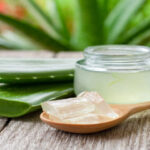Ever wondered how to add more flavor, crunch, and nutrition to your meals without extra calories? Meet ejotes—the humble green bean that packs a serious health punch. Whether you call them green beans, string beans, or ejotes (their name in Spanish), these vibrant pods are a versatile ingredient that deserves a spot in your diet.
In this guide, you’ll discover:
✔ What makes ejotes a nutritional superstar
✔ Easy ways to cook and enjoy them
✔ Expert-backed health benefits
✔ Delicious recipe ideas to try today
What Are Ejotes?
Ejotes are simply green beans (Phaseolus vulgaris) harvested while still young and tender. Unlike dried beans, they’re eaten whole—pod and all. They’re a staple in Mexican and Latin American cuisine but loved worldwide for their crisp texture and mild, slightly sweet flavor.
Nutritional Profile (Per 1 Cup Raw)
-
Calories: 31
-
Fiber: 2.7g (supports digestion)
-
Vitamin C: 12.2mg (boosts immunity)
-
Vitamin K: 14.4mcg (key for bone health)
-
Folate: 33mcg (important for cell growth)
Source: USDA FoodData Central
7 Health Benefits of Ejotes
Backed by science, here’s why you should eat more ejotes:
1. Supports Heart Health
Rich in fiber and antioxidants, green beans help lower LDL (“bad”) cholesterol and reduce inflammation linked to heart disease.
2. Aids Digestion
Their high fiber content promotes gut health and prevents constipation.
3. Boosts Immunity
Packed with vitamin C and antioxidants, ejotes help fight off infections.
4. Helps Manage Blood Sugar
With a low glycemic index, they’re great for diabetics or anyone watching their sugar intake.
5. Promotes Strong Bones
Thanks to vitamin K and calcium, they support bone density and reduce fracture risk.
6. May Help with Weight Loss
Low in calories but high in volume, they keep you full without overeating.
7. Improves Skin Health
Antioxidants like beta-carotene combat free radicals, keeping skin youthful.
How to Cook Ejotes: 5 Simple Methods
From quick sautéing to slow braising, here’s how to make them shine:
1. Steamed (Fast & Healthy)
-
Boil water in a pot with a steamer basket.
-
Add ejotes and steam for 5-7 minutes until tender-crisp.
-
Toss with olive oil, garlic, and lemon juice.
2. Sautéed (Flavor-Packed)
-
Heat olive oil in a pan, add minced garlic.
-
Toss in ejotes and cook 5-6 minutes on medium-high heat.
-
Finish with a sprinkle of parmesan or chili flakes.
3. Roasted (Crunchy & Caramelized)
-
Toss with oil, salt, and pepper.
-
Roast at 425°F (220°C) for 15-20 minutes until slightly charred.
4. Pickled (Tangy & Refreshing)
-
Combine vinegar, water, sugar, and spices in a jar.
-
Add blanched e-jotes and refrigerate for 24 hours.
5. Stir-Fried (Asian-Inspired)
-
Cook with sesame oil, soy sauce, and ginger for 3-4 minutes.
-
Top with toasted sesame seeds.
5 Delicious Ejotes Recipes to Try
1. Garlic Butter Ejotes
A 10-minute side dish with rich, savory flavor.
2. Ejotes con Huevo (Green Beans & Eggs)
A Mexican breakfast classic—sautéed beans with scrambled eggs.
3. Spicy Sichuan-Style Green Beans
Tossed in chili garlic sauce for a bold kick.
4. Ejotes Salad with Feta & Walnuts
A refreshing mix with cherry tomatoes and balsamic glaze.
5. Creamy Green Bean Casserole
A holiday favorite with crispy onions and mushroom sauce.
Buying & Storing Tips
-
Choose: Bright green, firm pods (avoid limp or blemished ones).
-
Store: In a paper towel-lined bag in the fridge for up to 5 days.
-
Freeze: Blanch first, then freeze for 6-12 months.
Final Thoughts: Why Ejotes Deserve a Spot on Your Plate
Whether steamed, roasted, or stir-fried, ejotes are a nutrient-dense, low-calorie, and delicious addition to any meal. They support heart health, digestion, immunity, and more—all while keeping dishes light and flavorful.










